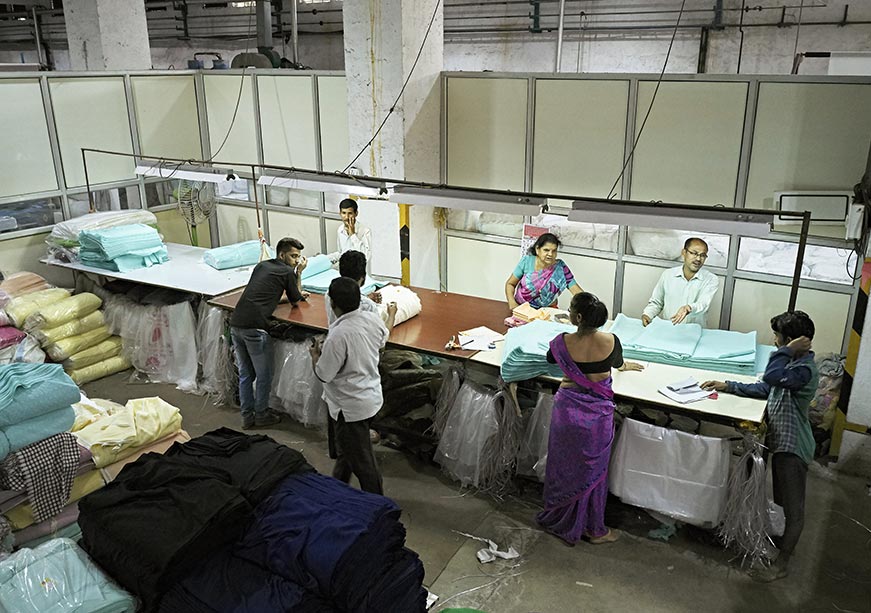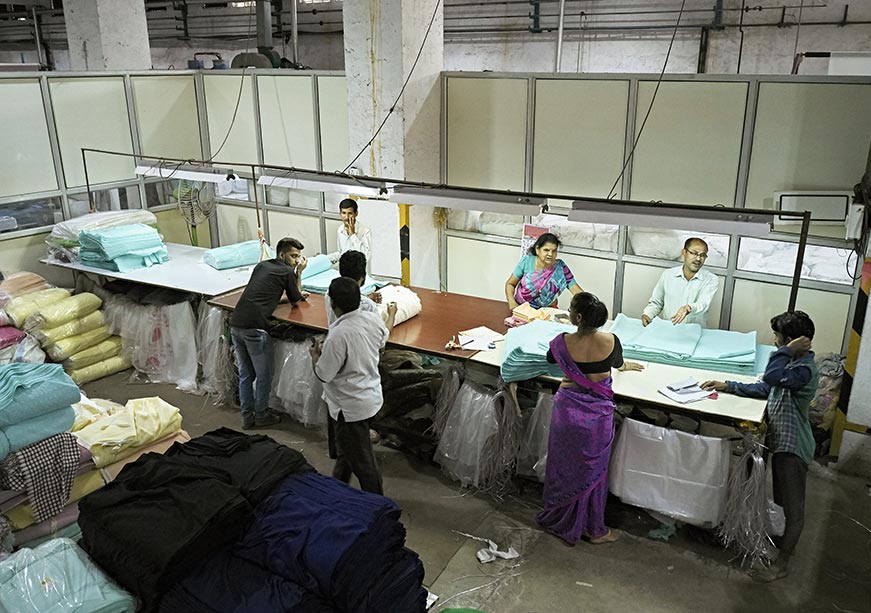

Image Source: Getty
Bangladesh’s mounting economic struggles
Bangladesh’s economic difficulties, exacerbated by the COVID-19 pandemic, have reached a critical point. The pandemic’s disruption to global supply chains hit Bangladesh particularly hard, as its economy is heavily dependent on exports, with the ready-made garment (RMG) sector contributing to around 80 percent of its total export earnings. Despite showing signs of recovery in 2021 and 2022, rising inflation and global supply chain disruptions soon resurfaced. By mid-2024, inflation had risen past 11 percent, with food prices climbing even higher, pushing the country into a precarious economic position.
Foreign exchange reserves have been dwindling at US$21.8 billion, only covering 2.5 months of imports, which is well below the International Monetary Fund’s (IMF) recommended target of 3.6 months of import coverage by 2027. The interim government has turned to external lenders such as the IMF to stabilise its economy and requested a US$5 billion soft loan from China. However, these loans offer only short-term relief and come with strict conditions. Without significant reforms in its financial and industrial sectors, Bangladesh risks further economic instability, which could have long-lasting repercussions for its people and global standing.
Without significant reforms in its financial and industrial sectors, Bangladesh risks further economic instability, which could have long-lasting repercussions for its people and global standing.
In addition, rising unemployment and shrinking remittance inflows have exacerbated the situation for millions of Bangladeshi families. Beyond these immediate concerns, Bangladesh’s banking sector has long been marred by structural issues such as non-performing loans, corruption, and weak regulatory oversight, further hampering economic stability. These structural weaknesses destabilised the country’s RMG sector, sparking growing worker discontent. Protests have become more frequent, driven by stagnant wages and deteriorating working conditions. Political instability worsened in August 2024, with Prime Minister Sheikh Hasina resigning after 15 years in power, leading to factory closures due to violent demonstrations. As a result, international buyers have shifted their orders to other nations, including India and Sri Lanka, raising concerns about Bangladesh’s long-term stability and economic outlook.
Market forces drive global garment orders to India
In response to Bangladesh’s political unrest, global market dynamics have shifted orders away from its RMG sector to other countries, with India emerging as a key beneficiary. International apparel brands, concerned about supply chain disruptions, have redirected their orders to India, particularly the Tiruppur knitwear hub. Within two weeks in September 2024, India secured orders worth INR4.5 billion (around US$54 million) from well-known global brands such as Germany’s KiK, the Netherlands’ Zeeman, and Poland’s Pepco. Indian companies like Raymond have also reported a surge in garment supply inquiries as they step in to fill the void created by Bangladesh’s crisis. International brands seeking reliable suppliers have turned to India, where labour availability and production capacity provide a stable alternative. This shift presents an opportunity for India to expand its ready-made garment market share, which has hovered at around 3 percent for years.
India’s strength lies in its abundant young workforce. Bangladesh’s RMG sector employs around four million workers, many of whom are women, and the country has long relied on its low labour costs to stay competitive in the global market. The 18 to 35 age group represents the bulk of the workforce, with 92.4 percent of workers under 35 and only 7.6 percent above 35. This demographic is crucial due to the sector’s physical demands, making young adults the primary labour pool. However, India’s 18-35 age group—estimated to be around half a billion people—dwarfs Bangladesh’s total population, positioning India well to absorb increased demand. India’s workforce and capacity to produce at competitive prices give it an edge in the global market.
International brands seeking reliable suppliers have turned to India, where labour availability and production capacity provide a stable alternative.
The shift in garment production to India also comes at a crucial time for the country as it grapples with its unemployment issues. As of mid-2024, India’s unemployment rate hovered above 8 percent, with significant joblessness concentrated among low- and medium-skilled workers. This new wave of RMG orders presents an opportunity to create jobs, particularly in some areas of Tamil Nadu, Karnataka and West Bengal, where the garment industry is a significant employer. By absorbing more RMG production, India can also help alleviate its unemployment challenges, especially for younger workers entering the job market with limited opportunities. However, this surge in orders must be handled carefully to avoid potential downsides such as wage stagnation or over-reliance on low-skilled jobs. The challenge for India lies in balancing the immediate need for job creation with the long-term goal of increasing productivity and ensuring that workers are adequately trained to meet global standards.
Navigating shifts in the global garment industry
India’s large labour pool offers a natural advantage in the global garment industry, allowing manufacturers to lower production costs and attract more international orders. This shift is aligned with basic economic principles, where an increase in labour supply can result in lower wage costs if labour demand remains steady. The Heckscher-Ohlin model, which predicts that countries will specialise in industries that make intensive use of their abundant factors of production, also supports India’s growing prominence in garment manufacturing.
The Heckscher-Ohlin model, which predicts that countries will specialise in industries that make intensive use of their abundant factors of production, also supports India’s growing prominence in garment manufacturing.
Yet, while India stands to gain in the short term, there are potential risks. Without corresponding increases in labour productivity, wage stagnation could set in, limiting long-term economic benefits. Moreover, regions that initially benefit from increased RMG orders must also invest in improving production efficiency and fostering innovation to sustain growth. Relying too heavily on low-cost labour could hinder India’s ability to climb the value chain in the global garment industry.
Finally, Bangladesh’s competitive edge in the RMG industry, historically built on low labour costs, is now under threat as global brands diversify their supply chains, eroding the country’s comparative advantage. With over 4 million workers employed in the RMG sector, its decline would lead to widespread unemployment, affecting related sectors like retail, housing, and services. High inflation, dwindling foreign exchange reserves, and political instability exacerbate the situation. Bangladesh’s heavy reliance on RMG, without sufficient export diversification, makes it highly vulnerable to external shocks. To safeguard its economic future, the country must urgently implement reforms, stabilise the political landscape, and invest in other manufacturing and service sectors, transitioning towards more economically viable industries.
Soumya Bhowmick is a Fellow and Lead of World Economies and Sustainability at the Centre for New Economic Diplomacy (CNED) at Observer Research Foundation
The views expressed above belong to the author(s). ORF research and analyses now available on Telegram! Click here to access our curated content — blogs, longforms and interviews.

